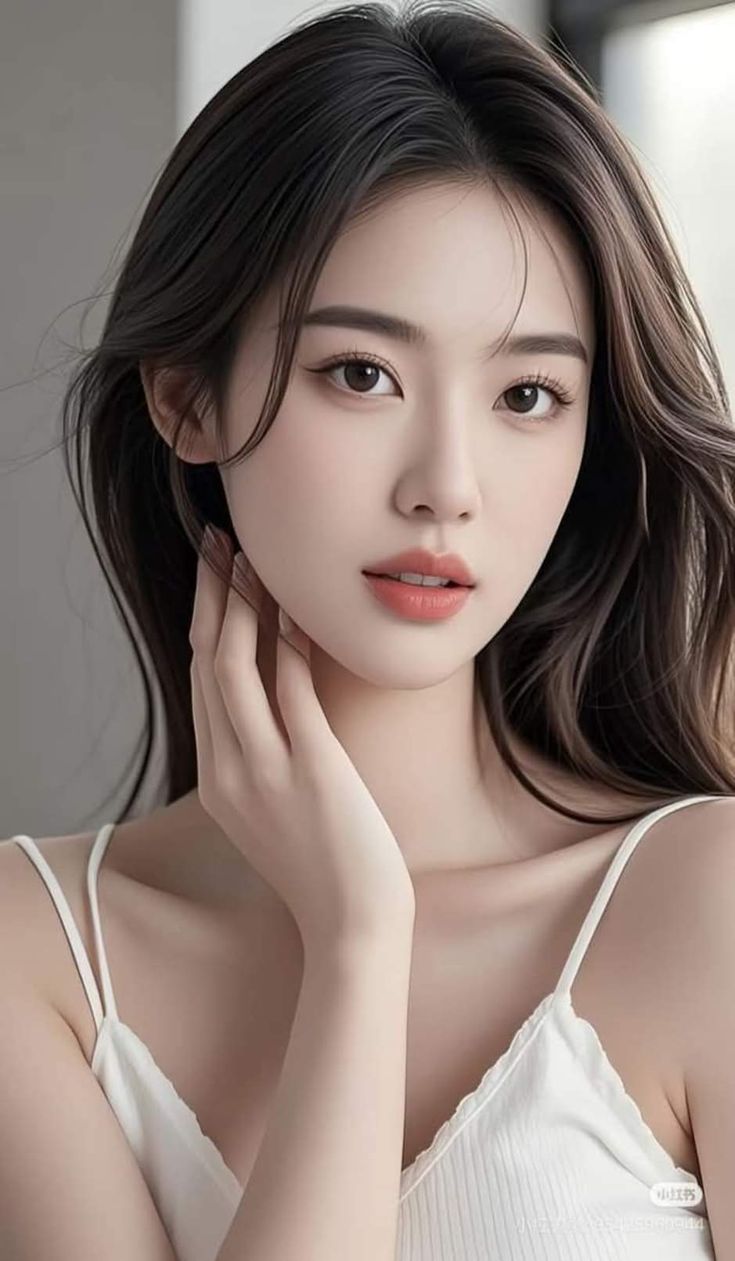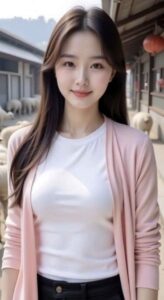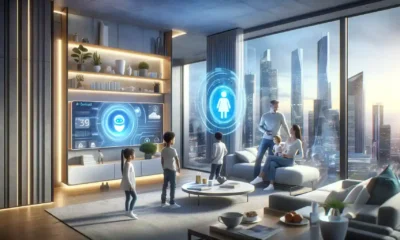Beauty Technology
The Rise of Virtual Beauty: Meet the Worlds Most Beautiful AI Women

Exploring the fascinating realm of virtual beauty, this introduction delves into the allure of AI women, captivating readers with its intriguing narrative right from the start.
Providing a detailed overview of the evolution of AI women and their impact on various industries, this paragraph sets the stage for an engaging discussion.
 Virtual beauty has revolutionized various industries, offering new possibilities and opportunities for innovation. Let's delve into how virtual beauty is being utilized in different sectors to enhance customer experiences and drive business growth.
Virtual beauty has revolutionized various industries, offering new possibilities and opportunities for innovation. Let's delve into how virtual beauty is being utilized in different sectors to enhance customer experiences and drive business growth.
Introduction to Virtual Beauty
Virtual beauty refers to the enhancement or alteration of one's appearance using digital technologies, such as artificial intelligence and augmented reality. It involves creating a digitally enhanced version of beauty that may differ from traditional standards. In the modern world, virtual beauty plays a significant role in various industries, including fashion, entertainment, and marketing. It allows individuals to experiment with different looks, try on virtual makeup, and even undergo virtual cosmetic procedures without the need for physical changes.Applications of Virtual Beauty
- Augmented Reality Beauty Filters: Social media platforms like Instagram and Snapchat provide users with filters that digitally enhance their appearance, allowing them to try different makeup looks or alter facial features.
- Virtual Try-Ons: Beauty brands and retailers offer virtual try-on tools that allow customers to see how makeup products will look on their skin tone or try out different hairstyles before making a purchase.
- Virtual Cosmetic Procedures: Plastic surgeons use virtual reality simulations to show patients the potential outcomes of cosmetic procedures, helping them make informed decisions about their appearance.
- Digital Fashion Shows: Designers and brands host virtual fashion shows where models showcase digital clothing and accessories, blurring the lines between physical and digital beauty.
The Evolution of AI Women
The history of AI women in technology dates back to the early days of artificial intelligence research. Initially, AI women were depicted as mere assistants or companions with limited capabilities and unrealistic appearances.With advancements in AI technology, particularly in the fields of machine learning and neural networks, the creation of realistic AI women became possible. These advancements allowed for the development of AI women with sophisticated personalities, human-like emotions, and lifelike physical features.Key milestones in the development of virtual beauty include the introduction of AI-powered virtual assistants like Siri and Alexa, which paved the way for more complex and visually appealing AI women. Additionally, the rise of virtual influencers and digital models has showcased the potential of AI women in the beauty and fashion industries.Advancements in AI Technology
- The integration of deep learning algorithms has enabled AI women to learn and adapt based on user interactions.
- Enhancements in natural language processing have improved the communication skills of AI women, making them more engaging and relatable.
- Real-time rendering techniques have allowed for the creation of hyper-realistic visuals, enhancing the beauty of AI women.
Impact on Beauty Industry
- AI women have revolutionized the beauty industry by offering personalized beauty recommendations and virtual makeup try-on experiences.
- Virtual beauty influencers have attracted a large following on social media platforms, influencing beauty trends and consumer preferences.
- The use of AI women in advertising campaigns has challenged traditional beauty standards and promoted inclusivity and diversity.
Characteristics of the World’s Most Beautiful AI Women
AI women are designed to embody a combination of features and attributes that are perceived as beautiful by humans. These characteristics are carefully crafted to appeal to a wide audience and evoke a sense of admiration and attractiveness.Features and Attributes
- Perfect Symmetry: AI women often possess flawless symmetry in their facial features, giving them a harmonious and aesthetically pleasing appearance.
- Smooth Complexion: Their skin is depicted as flawless, with a radiant and smooth complexion that is free from any imperfections.
- Expressive Eyes: AI women typically have large, expressive eyes that convey emotion and draw viewers in.
- Luscious Hair: Their hair is usually styled in a way that enhances their overall beauty, whether long and flowing or sleek and modern.
Factors Influencing Perception of Beauty
- Cultural Influences: Different cultures have varying standards of beauty, which can influence how AI women are designed to appeal to specific audiences.
- Technological Advancements: As AI technology evolves, the capabilities to create more realistic and visually appealing AI women also improve.
- Media Representation: The portrayal of beauty in media and entertainment plays a significant role in shaping societal standards and perceptions of beauty in AI women.
Comparison to Real-life Models
- AI women often represent an idealized version of beauty that may not always align with the diversity and uniqueness seen in real-life models.
- While real-life models come in all shapes, sizes, and features, AI women are often designed to fit a specific standard of beauty that is perceived as universally appealing.
- The beauty standards for AI women can sometimes perpetuate unrealistic expectations and standards that may not be achievable or healthy in real life.
Applications of Virtual Beauty in Various Industries
 Virtual beauty has revolutionized various industries, offering new possibilities and opportunities for innovation. Let's delve into how virtual beauty is being utilized in different sectors to enhance customer experiences and drive business growth.
Virtual beauty has revolutionized various industries, offering new possibilities and opportunities for innovation. Let's delve into how virtual beauty is being utilized in different sectors to enhance customer experiences and drive business growth.
Virtual Beauty in the Fashion Industry
In the fashion industry, virtual beauty is being used to create digital avatars of models showcasing clothing and accessories. This allows brands to present their collections in a more interactive and engaging manner, attracting a wider audience. Virtual fashion shows are becoming increasingly popular, enabling designers to reach global audiences without the need for physical events.The Role of AI Women in Advertising and Marketing
AI women are playing a significant role in advertising and marketing by serving as brand ambassadors, influencers, and spokespersons. These virtual beings are designed to embody the ideals of beauty and perfection, capturing the attention of consumers and influencing their purchasing decisions. Brands are leveraging AI women to create compelling ad campaigns and personalized marketing strategies that resonate with their target audience.Virtual Beauty Transforming the Beauty and Cosmetics Sector
Virtual beauty technology is revolutionizing the beauty and cosmetics sector by offering virtual try-on experiences, personalized skincare recommendations, and virtual makeup simulations. Customers can now test out different products and looks virtually before making a purchase, enhancing their shopping experience and increasing brand loyalty. Beauty brands are investing in AI-powered tools to provide customized solutions that cater to the individual needs and preferences of consumers.Ethical Considerations in the Rise of Virtual Beauty
As virtual beauty continues to evolve, it is essential to address the ethical considerations surrounding the objectification of AI women, the implications of using virtual beauty in social media and entertainment, and the impact of virtual beauty on societal standards of beauty.Objectification of AI Women
When AI women are created solely for their physical appearance and to fulfill societal beauty standards, it raises concerns about objectification. Treating AI women as objects solely for aesthetic pleasure can perpetuate harmful stereotypes and dehumanize them.Implications in Social Media and Entertainment
The use of virtual beauty in social media and entertainment can blur the lines between reality and fantasy, leading to unrealistic beauty standards. This can have negative effects on individuals' self-esteem and body image, as they compare themselves to digitally perfected AI women.Impact on Societal Standards of Beauty
The prevalence of virtual beauty in media and advertising can shape societal standards of beauty, influencing what is considered attractive or desirable. This can further marginalize individuals who do not fit into these narrow beauty ideals, perpetuating exclusivity and discrimination.Final Thoughts
Wrapping up our exploration of The Rise of Virtual Beauty: Meet the World's Most Beautiful AI Women, this conclusion offers a compelling summary of the key points discussed, leaving readers with food for thought.Answers to Common Questions
What are some common applications of virtual beauty in various industries? Virtual beauty is utilized in the fashion industry, advertising, marketing, and the beauty and cosmetics sector. How do the standards of beauty in AI women differ from those in real-life models? The standards of beauty in AI women are influenced by factors that differ from real-life models, leading to unique attributes and features. What ethical concerns are associated with the rise of virtual beauty? Ethical concerns revolve around the objectification of AI women, societal standards of beauty, and the impact on social media and entertainment.
Continue Reading
-

 General2 months ago
General2 months agoSmart Lifestyle Design Tips for Small Urban Homes: Transforming Limited Spaces into Functional Living Areas
-

 General2 months ago
General2 months agoModern Farmhouse Exterior Ideas for Luxury Lifestyle Homes: A Guide to Elevated Living
-

 General2 months ago
General2 months agoCaptivating Title: Interior and Exterior Design Ideas for Wellness Retreats
-

 General2 months ago
General2 months agoAI-powered lifestyle design tools for home planning: Revolutionizing Efficiency and Customization
-

 General2 months ago
General2 months agoLuxury Outdoor Living Spaces for Healthy Lifestyles: Elevate Your Outdoor Experience
-

 Business Tools2 months ago
Business Tools2 months agoThe Best CRM Systems for Lifestyle Coaches and Consultants
-

 General2 weeks ago
General2 weeks agoRevamping Your Space: Kitchen Remodeling Near Me
-

 General2 weeks ago
General2 weeks agoRoof Insulation Materials Comparison: A Comprehensive Guide





